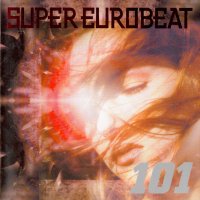


They went to Italy and met Giancarlo Pasquini (later known as Dave Rodgers), then a member of the Italo disco band Aleph. Two Japanese men, the owner and a managing director of Avex, a small import record shop at the time, decided to release a compilation CD. In the early 1990s, Eurobeat's popularity was gradually decreasing in Japan. The Japanese Para Para dance culture is influenced by Eurobeat. Velfarre, a discothèque located in Tokyo, was considered a mecca of Eurobeat during the 1990s and 2000s. In Japan, this music is called "Eurobeat", "Super Eurobeat", and "Eurobeat Flash". This attracted the attention of many Italo disco producers (mostly Italians and Germans), though by the late 1980s the Germans had faded out of Italo disco and focused on more popular scenes, mainly trance. The later solo success of Arabesque's lead singer Sandra further introduced this sound to Japan. This did not prevent the release of two Italo disco-sounding singles in 19, produced and mixed by Michael Cretu (of Enigma). Japan experienced Italo disco through the success of the German group Arabesque, which broke up in 1984. That sound became the soundtrack of the Para Para nightclub culture, which has existed since the early 1980s. These were mainly Italian and German-produced Italo disco releases. Meanwhile, in Japan in 1985, the term "Eurobeat" was applied to all continental-European dance music imports. Without them, we couldn't have made it happen." " have been with us for years now, and they believed in us. Italy and Japan "By the Italians, for the Japanese" Epic (licensed by Sony Europe) was reluctant about releasing the album but it turned out to be so successful in Japan that it was awarded the Japan Record Award Grand Prix for Best International Album of 1989 in the 'Pop' or 'Popular' Category. Burns went on making a next album, produced by Burns and Dead or Alive drummer Steve Coy, without them, called Nude. Pete Burns of Dead or Alive regularly fought the production team over " to their production methods and concepts" which SAW were "quite firm about". This musical formula was proven to be successful enough to be capitalized on as they had a string of top 10 UK hits in the 1980s to the point of their version of Eurobeat becoming synonymous with British pop music as a whole. As underground record producers, they sought to recapture the "nostalgia" of Motown Sound with a hint of campy playfulness where the simplicity of musical structures, like in Italian disco, was preferred. The trio of British record producers, songwriters, and former DJs Mike Stock, Matt Aitken, and Pete Waterman were involved in the British underground club culture, encountering the Black American soul music-focused scene called Northern Soul, Italian pop-Eurodisco, and sped-up Motown Sound-inspired tracks. Waterman (1986) on Bananarama "I Heard a Rumour". "It's a great hybrid with Motown-style lyrics, an Italian-style melody, and a Eurobeat. By 1989, with the advent of Eurodance and Euro house, the term was dropped in the UK. During 1986–1988, it was used for specific Italian 1980s Eurodisco imports, such as Sabrina Salerno, Spagna, and Baltimora but was also used in the United States as a catch-all term for UK-based dance and electropop groups of the time such as Pet Shop Boys, purported to have a "European beat", hence Eurobeat. The term "Eurobeat" was subsequently used commercially to describe the Stock Aitken Waterman–produced hits by Dead or Alive, Bananarama, Jason Donovan, Sonia, and Kylie Minogue which were heavily based on the British experience with Italo disco. Many European acts managed to break through under this new recognition, namely the likes of Modern Talking, Bad Boys Blue, Taffy, and Spagna. Use of the term īritish record producer Ian Levine's Eastbound Expressway, released the single "You're a Beat" in recognition of the slower tempo of hi-NRG music emerging from Europe. There is also a C melo after the first chorus, as well as another A/B melo variant after the second sabi. The A melo, or a-melody is the first verse in the song, the B melo is the bridge of the song, and there is a vocal chorus. The intro is the introduction into the song, the sabi is the musical part without voices. Beginning (intro) → synth → A melo (verse) → B melo (bridge) → chorus → synth → C melo → ending


 0 kommentar(er)
0 kommentar(er)
